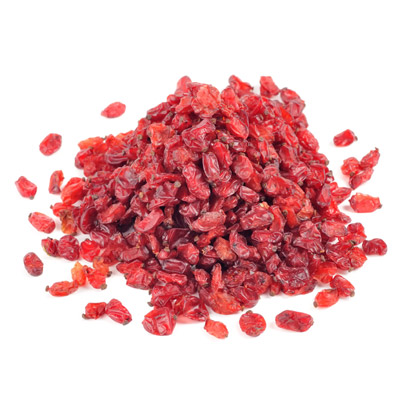- Description
Product Description
Barberry (barberry), also called the barberry, of the family Berberidaceae is a thorny shrub that still exists in France, in the mountains in the wild state.
There are many varieties of barberry. Several species from Asia and North America are commonly grown as ornamental shrubs. The species native to Europe produces red berries (Berberis vulgaris). Iran is the largest producer of dried berries of barberry.
Ripe in September, they are edible raw or cooked.
In France, Dijon and Rouen, they are used to make jams or in the famous traditional cuisine. We also makes juice, jellies, wines and liqueurs.
Infused in combination with star anise, they become digestive teas. In Eastern Europe, they are used to meet the cabbage dishes. In Iran, they are used in one of the most popular dishes named Zereshk polo (rice zereshks), red berries adding to the color of rice and a tangy taste!
The benefits of barberry for health
The consumption of Barberry helps in liver cleansing and helps against nausea and vomiting. They also stimulate appetite and digestion and reduce gastrointestinal pain.
The principal active compound of barberry berries is berberine which effectiveness has been proven in a variety of conditions.
The berries of barberry, acidic flavor, are very rich in vitamin C and iron , with a very high rate
- Comparison of iron content products for 100 g :
- Berberis : 20 mg
- Liver : 8 mg
- Beef meat : 2 mg
The barberry is an effective sedative and can lower blood pressure. It is an effective uterine stimulant ( or recommended for use during pregnancy ) . The bark of the shoots and roots has for its anti-inflammatory and antimicrobial properties. The barberry berries are also consumed in the case of gallstones or inflammation of the gallbladder. They are a great support in the case of splenomegaly in helping the return to normal.
In ancient Egypt, it was macerated barberry to reduce fever . Chinese medicine used it over 3000 years to treat stomach ulcers.
Today, we still use in cases of fever, diarrhea, arthritis, colds, flu and high blood pressure.
Nutritional value
Calories (kJ/100 g): 1384
Calories (kcal/100 g): 327
Protein (g/100 g): 3,4
Total Carbohydrate (g/100 g): 63,6
– Sugars (g/100 g): 46,6
Total Fat (g/100 g): 1,0
– Saturated Fat (g/100 g): 0,4
Dietry Fiber (g/100 g): 11,9
Sodium (g/100 g): 0,02
Vitamin C (mg/100g) 13,6
 English
English Français
Français



